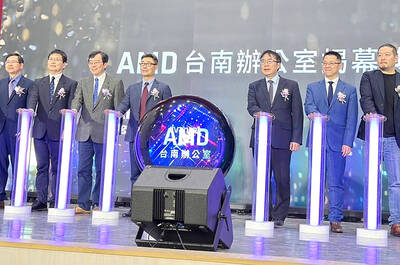The rally in palm oil prices is set to accelerate as demand for the commodity’s use in biofuel increases at a time when output is falling, veteran industry analyst Dorab Mistry said.
Benchmark futures could reach 2,700 ringgit (US$648.18) a tonne by March next year, Mistry, director at Godrej International, said in remarks prepared for delivery at an industry conference in Bali, Indonesia.
That would be their highest level in more than two years and would take the gain from the July low to about 40 percent.
“Sentiment is red hot,” Mistry said. “With lower production, biodiesel usage has become the spark to ignite the rally.”
Malaysian futures, which set the tone for global prices of the most-used edible oil, last year capped their biggest monthly advance in four years as supply concerns, strong Chinese demand and expectations for a jump in consumption in biodiesel propelled the gauge into a bull market.
The “game changer” has been Indonesian President Joko Widodo’s support for B30, a program that requires biofuels to be made using 30 percent palm oil from next year, Mistry said.
Now, the market is in “a great hurry” and has begun the job of rationing supplies by means of higher prices, he said.
Slowing output in Indonesia, the top producer, would also tighten the market, Mistry said.
Dry weather, fewer palm trees being planted in new areas, and a cutback in the use of fertilizers would result in production growth of just 1 million tonnes, he said.
Output in Malaysia, the No. 2 grower, might drop by 1 million tonnes in the first half of next year, according to Mistry’s estimate.
There is little scope for buyers to switch from palm to rival soft oils as output of soy oil and sunflower oil would only rise slightly next year, Mistry said.
Malaysian stockpiles might total 2.5 million tonnes by next month, down from 3.22 million tonnes a year earlier, he said.
There is a big opportunity in China, where soybean crushing is expected to drop, he added.
The country would import less rapeseed oil, and biodiesel demand is significant, Mistry said.
MEAT MARKET
US meat markets had so far been shielded from the effects of African swine fever wiping out Asian herds. That is starting to change.
As pork supplies plummet in China, the world’s top consumer is desperate for meat and is ramping up imports.
As a result, it is becoming harder to set longer-term protein contracts amid concerns over market volatility and changing trade flows, said Jayson Penn, chief executive officer of Pilgrim’s Pride Corp, the No. 2 US chicken producer.
“The contracting season is moving somewhat slower this year” for chicken, Penn said on a conference call with analysts following the release of third-quarter earnings.
While major fast-food restaurant chains are looking for beef contracts, “there are not many sellers willing to forward price,” he said.
On the Chicago Mercantile Exchange, hog futures for December settlement fell 9.1 percent this month, the biggest drop among major agricultural commodities.
The slump underscores the challenges for US farmers who have increased production. China has bought US pork in stops and starts, contributing to elevated volatility in hog futures.
Other commodities:
‧Spot gold on Friday settled at US$1,514.43 an ounce, up 0.7 percent for the week.
‧Silver on Friday eased to US$18.12 an ounce, but it was up 0.7 percent for the week.
Additional reporting by staff writer

Anna Bhobho, a 31-year-old housewife from rural Zimbabwe, was once a silent observer in her home, excluded from financial and family decisionmaking in the deeply patriarchal society. Today, she is a driver of change in her village, thanks to an electric tricycle she owns. In many parts of rural sub-Saharan Africa, women have long been excluded from mainstream economic activities such as operating public transportation. However, three-wheelers powered by green energy are reversing that trend, offering financial opportunities and a newfound sense of importance. “My husband now looks up to me to take care of a large chunk of expenses,

SECTOR LEADER: TSMC can increase capacity by as much as 20 percent or more in the advanced node part of the foundry market by 2030, an analyst said Taiwan Semiconductor Manufacturing Co (TSMC, 台積電) is expected to lead its peers in the advanced 2-nanometer process technology, despite competition from Samsung Electronics Co and Intel Corp, TrendForce Corp analyst Joanne Chiao (喬安) said. TSMC’s sophisticated products and its large production scale are expected to allow the company to continue dominating the global 2-nanometer process market this year, Chiao said. The world’s largest contract chipmaker is scheduled to begin mass production of chips made on the 2-nanometer process in its Hsinchu fab in the second half of this year. It would also hold a ceremony on Monday next week to

TECH CLUSTER: The US company’s new office is in the Shalun Smart Green Energy Science City, a new AI industry base and cybersecurity hub in southern Taiwan US chip designer Advanced Micro Devices Inc (AMD) yesterday launched an office in Tainan’s Gueiren District (歸仁), marking a significant milestone in the development of southern Taiwan’s artificial intelligence (AI) industry, the Tainan City Government said in a statement. AMD Taiwan general manager Vincent Chern (陳民皓) presided over the opening ceremony for the company’s new office at the Shalun Smart Green Energy Science City (沙崙智慧綠能科學城), a new AI industry base and cybersecurity hub in southern Taiwan. Facilities in the new office include an information processing center, and a research and development (R&D) center, the Tainan Economic Development Bureau said. The Ministry

ADVERSARIES: The new list includes 11 entities in China and one in Taiwan, which is a local branch of Chinese cloud computing firm Inspur Group The US added dozens of entities to a trade blacklist on Tuesday, the US Department of Commerce said, in part to disrupt Beijing’s artificial intelligence (AI) and advanced computing capabilities. The action affects 80 entities from countries including China, the United Arab Emirates and Iran, with the commerce department citing their “activities contrary to US national security and foreign policy.” Those added to the “entity list” are restricted from obtaining US items and technologies without government authorization. “We will not allow adversaries to exploit American technology to bolster their own militaries and threaten American lives,” US Secretary of Commerce Howard Lutnick said. The entities